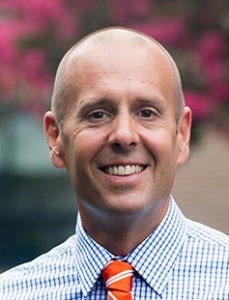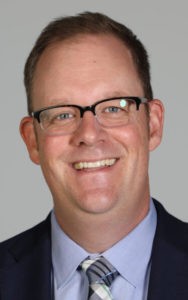This is the fifth in a series created by a partnership between Baptist News Global and the Campbell University Center for Church and Community. Each month’s columns explore one of the seven types of capital described in the Community Capitals Framework developed by Flora, Flora and Gasteyer.
A few years ago, Brian worked as a consultant on a large social capital initiative in Charlotte, N.C.. The project was in response to the awareness that large segments of the population were historically denied access, inclusion and equity in areas that many others took for granted.
Social capital involves bonding and bridging efforts, which we will discuss more in this article. The significance for the church is that while it often does the bonding work well, it does not always do the bridging work well. You might even call it a sin of omission in many communities.
“Social capital is, in a word, community.”
Consider Charlotte, which on a national survey by Robert Putnam scored near the top for social capital indicators of philanthropic giving and churches per capita but was second to last in interracial trust. Out of 40 geographies studied, Charlotte was 39 out of 40, behind only Maricopa County, Ariz. As a community, Charlotte seemed to score high on measures related to bonding social capital, but low on those that indicate bridging social capital.
As we have discussed in previous articles, the community capitals are interrelated, and social capital flows strongest along the current among the seven. Flora, Flora and Gasteyer describe social capital as more than just an individual attribute, but importantly an interactive and community-level concept that “involves mutual trust, reciprocity, groups, collective identity, working together, and a sense of shared future.”
Our churches, workplaces, youth sports leagues, service clubs and schools all are social organizations in which we create networks and build trusting relationships with others to work toward the public good. Social capital is, in a word, community.
To suggest that social capital is a prominent community capital would be an understatement. In fact, there are two types of social capital that we referenced earlier and hope to discuss — bonding and bridging social capital.
According to Flora, Flora and Gasteyer: “Bonding social capital consists of connections among individuals and groups with similar backgrounds. These connections may be based principally on class, ethnicity, kinship, gender or similar social characteristics. Members of a group with high bonding capital know one another in multiple settings or roles.”
“Bonding is the part of the equation that pulls people together.”
Bonding is the part of the equation that pulls people together. It is the proverbial glue of the community or organization. It is one of the things that churches tend to do well as we look out for one another, attend to one another’s needs, celebrate, grieve and serve together.
For a teenager, the bonding relationships of church are enormous. It is where they create relationships with peers and adult mentors. They gain access to resources that are present in their faith communities. They are encouraged and supported to answer questions about who God is calling them to be. In the healthiest situations, teenagers find significant adult scaffolding around them to nurture their formation — spiritually, emotionally and physically.
Similar types of bonding happen for adults in congregations. Job leads might be found. Meals are shared for those who have been hospitalized or are grieving. Beyond that there are social and spiritual relationships that evolve. Adults find support from one another in ways that impact social standing, employment, marriages and families.
Often people will stay engaged with a church because of these relationships even when they dislike the pastor or some stances of the church itself. The bonding of social capital is what makes the relationships sticky.
We have missed bonding social capital greatly during the pandemic. Yet, although we have been left wanting for community during this time, Robert Putnam, in his often-cited book Bowling Alone, has documented our decreased involvement in various social organizations throughout the entire second half of the 20th century. In fact, although many of us engage regularly in networks through social media, the social networks that allow us to spend time in bodily co-presence and meaningful engagement with others have been waning for some time. For rural churches, the evidence may be in decreased membership and worship attendance over the past decades.
It might be that the need to reconnect with others post-pandemic will be enough to re-invigorate involvement in church and other community organizations. But, given Putnam’s findings from more than two decades ago about our decreased engagement in community life, it also may not. Instead, perhaps we need to re-examine how we engage in and through these social organizations.
This brings us to the second piece of social capital, bridging social capital. As Flora, Flora and Gasteyer write, “Bridging social capital connects diverse groups within the community to each other and to groups outside the community.”
“It is through bridging social capital that we come to understand and trust one another across differences and work to strengthen relationships.”
Putnam describes bridging social capital as more “outward looking,” arguing that it “can generate broader identities and reciprocity,” It is through bridging social capital that we come to understand and trust one another across differences and work to strengthen relationships.
The difficulty, of course, is that whenever inclusion develops in a community, or a segment of one, that also creates exclusion. The power of bonding by nature is that it creates inclusion and exclusion. In and of itself, that is not a problem until it is left unaddressed.
Thinking back to the example of Charlotte at the beginning of the article, there seemed to be a disconnect between bonding and bridging social capital. And, although it is perhaps a presumptuous leap to suggest a correlated nature between those statistics, it does raise the question of how well access, inclusion and equity are championed in communities of all types — including by churches in rural communities, and maybe even your congregation and community.
“The problem with many of our created networks is that you have to be inside the system to gain access.”
The problem with many of our created networks is that you have to be inside the system to gain access, so how do you gain access to other networks, particularly if your church does not provide advantage? Imagine if bonding relationships could grow more readily into bridging relationships to build greater social capital and collaborative work across the entire community.
Churches are called to collaboration as a general act of kingdom building. The church as described in Acts, the missionary journeys of Paul and the imagery of the body of Christ are but a few examples of how our mission in the world is connected through time and space.
This is language the church is familiar with but perhaps doesn’t always live out in practical ways at the local level. Groups are embedded with inequalities, and those only break down as bridges are built to expand networks.
In a previous column, we explored some of these inequalities. These are starting points for building bridges. If these networks are to be impactful with the purpose of developing stronger communities, the bridging work needs to be expanded beyond those we know, and be done with humble curiosity, so that individuals and communities might flourish. While the internal connections may be strong within a church, how strong are the ties to the community? How do we use bridging social capital to connect to local events, schools, restaurants or even (gasp!) churches from other denominations?
One step is to recognize the role of the faith leader. There are countless clergy who recognize the importance of expanding their roles as pastor to the community, redefining the definition and parameters of their congregation.
“There are countless clergy who recognize the importance of expanding their roles as pastor to the community.”
Justin’s pastor encourages his church to see the need to stop thinking of themselves as simply a church in the community but rather as part of the broader church body of the community. Another minister in Monroe, N.C., is not only associate pastor at his church, but adjunct professor at the university nearby and a referee in the North Carolina High School and National Collegiate athletic associations.
These are examples of clergy leading the way to create bonding and bridging social capital in their communities. They are creating opportunities for community engagement and setting examples of what increased participation in the public good might look like. They also are representative of what the church is called to be and to do.
In this way, the broader church in the community can be a foundational space for creating and bolstering social capital as we move out of the COVID-19 pandemic, and as we seek to re-engage in community life now two decades after Putnam’s work.
If we have not learned anything else during the pandemic, it is that the flourishing of the community means the whole community, especially those lacking access, inclusion and equity to many of its resources. The bridging work is critical to making this happen, and the bonding social capital in congregations is a great place to start.
Ideas for congregational bridging:
- Create individual and organizational friendships, not just one-off projects through collaboration in community service activities.
- Plan mission trips or events that tie in education about context and systemic issues.
- Facilitate listening and learning dialogues with various groups in the community that might look or believe differently than your own.
- Deepen relationships and understanding by exploring the cultural capital of your community.
- Attend and support local events hosted by other community groups.
- Increase online worship opportunities, building bridges using social media to move relationships from online to “in real life.”

Brian Foreman

Justin Nelson
Brian Foreman serves as executive director of the Center for Church and Community at Campbell University. Justin J. Nelson serves as assistant professor of sociology.
Previous articles in this series:
Let’s begin a conversation about the church in rural areas
The importance of natural capital for the rural church
Rural churches need to understand the cultural capital of their communities
Understanding human capital makes volunteer recruitment easier


